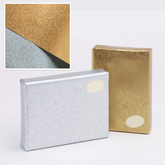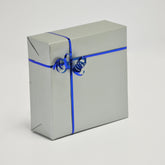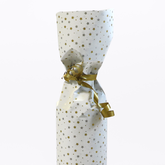Making the switch from Plastic to Paper Packaging

As the recent UN Climate Conference has made clear, the days of wasteful packaging are numbered. Expanded polystyrene (EPS) is being phased out across the globe, leaving many organisations in a state of uncertainty about how to move forwards in a way that is cost-effective. Here’s a quick glimpse into what’s to come!
Why are we switching from Plastic to Paper?
Plastic is cheap, convenient, and effective, and for decades has been used as the foundation for everything from product safety to financial planning. As such, the decision to phase it out has not been taken lightly. However, plastics are chemical pollutants that do not biodegrade, and which enter water, food, and the environment in the form of harmful debris. To dispose of packaging safely, it must be able to break down without damaging the biological life surrounding it. For the time being, paper is the most cost-effective alternative.
How will the switch affect my Organisation?
Companies that are ahead of the curve have reported positive impacts from starting to ditch plastic packaging. Lego started the phase out in 2020 in response to feedback from their consumer base, reflecting the social demand for sustainable solutions. As Lego’s chief executive Niels Christiansen puts it, “it was the passion and ideas from children than inspired us to begin to make the change.” Other major brands, such as Boots, are hot on their tails. By switching to brown paper, Boots has revealed that it will reduce plastic waste by 40 million bags per year.
Is paper the only Option?
The need for solutions to the packaging crisis is provoking a tidal wave of innovation, and the results are dynamic. Currently, paper and cardboard are the most cost-effective answers, and this is for a variety of reasons. Firstly, the infrastructure is well-established, the methodologies are tried and tested, and the substrates are supported by the printing industry. Additionally, consumers are familiar with paper and cardboard, and understand their recycling responsibilities.
However, large scale paper production is fraught with environmental risks, and campaigners have rightfully pointed out the impact of commercial timber plantations on natural ecosystems and economies in South-East Asia and South America, where most paper-wood pulp is sourced. ‘Sustainable’ paper has the potential to be the next palm oil scandal. To avert this, companies such as Ikea have opted for , and any company willing to opt for seaweed packaging will offer customers a solution that is both fully biodegradable and edible. As investment continues, the choices will increase.
How can I make the switch to Paper Packaging?
Switching to paper packaging is usually achieved in a phased approach. For instance, companies such as Unilever have given themselves five years to gradually reduce their plastic footprint until their packaging becomes fully sustainable. The key to achieving the change is clear communication in combination with brand consistency. In other words, consumers need to be aware of the change, but shouldn’t experience any interruption in quality. For this, it is important to partner with an experienced ecommerce packaging specialist who can ensure that vital marketing aspects such as colour and texture are not sacrificed.
What next?
At Kudos Giftwrap, we take sustainability seriously. We also value our role in collaborating with, and supporting, the companies that rely on our packaging expertise. To accelerate your sustainability journey, have a chat with one of our packaging experts about how to reduce the plastic content of your packaging.






